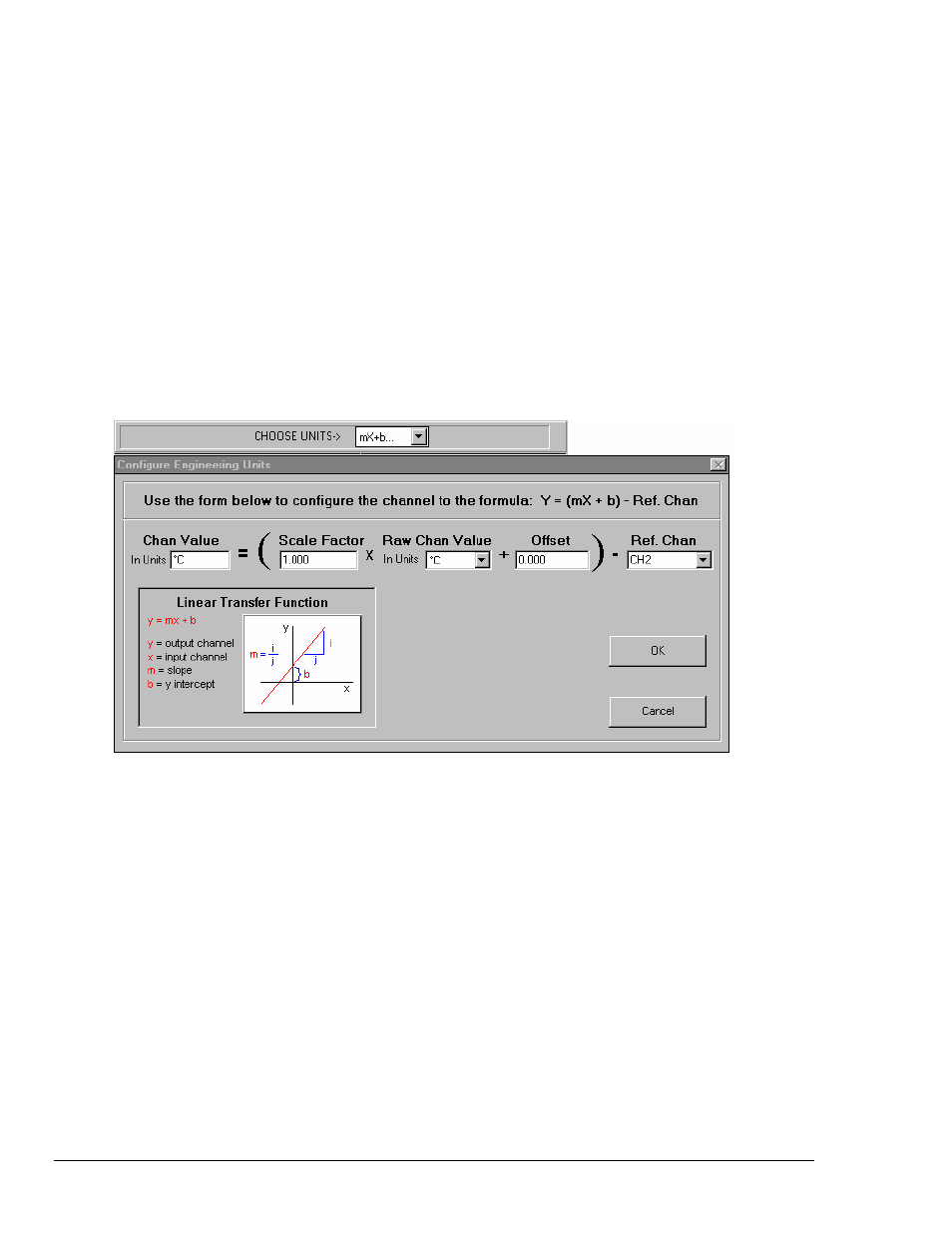Measurement Computing TempScan/1100 User Manual
Page 172

CV-40 ChartView
988992
Software
Reference
Note: When using a channel as a reference channel, remember that lower numbered channels are calculated
ahead of higher numbered channels, e.g., CH1 is calculated ahead of CH2. This makes a difference
when subtracting a reference channel in regard to the time aspect of the reference value.
If the channel is configured for Volts, the units automatically change to V; at this point, you have the
option of selecting the millivolt unit (mV). The user can also change each channel to apply a linear
equation (mX+b) to the data. When the mX+b option is selected the Configure Engineering Units dialog
box is displayed. You are prompted to define “m” and “b” and the engineering units label; as well as which
standard units the mX+b equation should be applied to. The engineering units chosen will be displayed in
the “Units” column, and the “mX+b” equation will be applied to the reading from the device before the
reading is displayed or written to disk.
The mX+b option is convenient for obtaining a value that has a linear relation to a channel reading.
X is the scanned voltage value read back from the acquisition device
m is [but not limited to] a proportionality constant or gain factor, but not zero.
b is the offset value (the value of the calculated reading when the scanned value is “zero”).
Alarm Configuration Columns
1)
Low Limit
⎯ Set alarm low limit.
2)
High Limit
⎯ Set alarm high limit.
3)
Hysteresis
⎯ A hysteresis value can be set for each channel to avoid a “chatter” problem.
4)
Alarm #
⎯ You can assign one alarm number (1 to 32) to a channel. Any number of channels can be
assigned to the same alarm number. A given digital output will be set “true” (1) if at least one of the
common channels (assigned to a single alarm) enters an alarm state.
